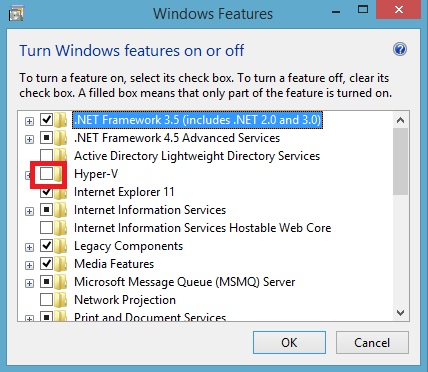Sometimes one stupid mistake can cost a lot of time. A few days ago my application (AngularJS + ASP.NET Web API) started crashing because of the following error:
MSDTC on server 'XXX' is unavailable
It was strange. I wasn't aware of any distributed transactions in my application. To be honest, I was using TransacionScope but I was sure that there was no reason to promote a lightweight transaction into a distributed one. To make things more strange the error wasn't reported every time. When I tried to update data for the first time everything was ok. However, the second attempt (and every next) was failing.
It took me some time to examine all recent changes but finally I found a problem. It was quite tricky so I decided to write about it. Let's start with the fact that I use Ninject as a dependency injection container. Among others Ninject allow us to control a lifetime of objects (instances). Particularly, in the case of web applications, we can use:
Both objects perform updates/inserts/deletes and are used inside TransacionScope. For the first request it is not a problem. Both objects are initialized within the same request and use the same database connection. It means that a lightweight transaction is used.
However, for the second (and every next) request an object of type B is re-used whereas a new object of type A is created. Object of type B was initiated in the previous request and it uses a different connection than the one used by an object of type A. It means that a distributed transaction will be used in this case.
To sum up:
MSDTC on server 'XXX' is unavailable
It was strange. I wasn't aware of any distributed transactions in my application. To be honest, I was using TransacionScope but I was sure that there was no reason to promote a lightweight transaction into a distributed one. To make things more strange the error wasn't reported every time. When I tried to update data for the first time everything was ok. However, the second attempt (and every next) was failing.
It took me some time to examine all recent changes but finally I found a problem. It was quite tricky so I decided to write about it. Let's start with the fact that I use Ninject as a dependency injection container. Among others Ninject allow us to control a lifetime of objects (instances). Particularly, in the case of web applications, we can use:
- InRequestScope method - it tells Ninject that one object of a particular type should be created for each individual request.
- InSingletonScope method - it tells Ninject that one object of a particular type should be created for all requests.
kernel.Bind(x => x
.FromAssembliesMatching("test.dll")
.SelectAllClasses().InheritedFrom(typeof(IInterfaace))
.BindAllInterfaces()
.Configure(z => z.InSingletonScope()));
The problem was that accidentally I mixed InSingletonScope and InRequestScope. For example, let's assume that each request requires objects of two classes A and B. Objects of type A are within the request scope and objects of type B are within the singleton scope.Both objects perform updates/inserts/deletes and are used inside TransacionScope. For the first request it is not a problem. Both objects are initialized within the same request and use the same database connection. It means that a lightweight transaction is used.
However, for the second (and every next) request an object of type B is re-used whereas a new object of type A is created. Object of type B was initiated in the previous request and it uses a different connection than the one used by an object of type A. It means that a distributed transaction will be used in this case.
To sum up:
- DI containers give a great power but with the power comes great responsibility.
- Be careful when using objects of a different scope together. Especially when these objects require data access.
- Be careful when using multiple connections inside TransacionScope. In the case of MSSQL 2005 in this situation a distributed transaction will be always used. In the case of MSSQL 2008 or newer it is possible to use more than one connection inside TransacionScope without automatic promotion. However, if and only if these connections are not opened at the same time.
- TransactionScope automatically escalating to MSDTC on some machines? is a great source of knowledge about TransacionScope and about the process of promoting lightweight transactions into distributed ones.



 orcid.org/0000-0002-6838-2135
orcid.org/0000-0002-6838-2135